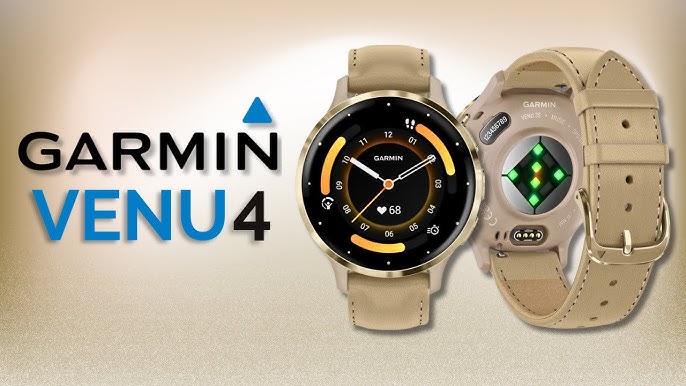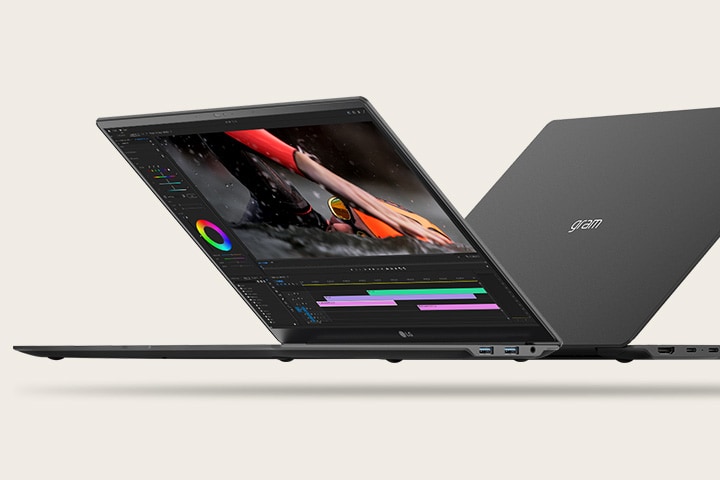Alright, so you want a tablet that won’t leave your wallet sobbing? Say hello to the Xiaomi Redmi Pad SE 8.7. I know, tablets are everywhere—honestly, scrolling through options feels like online dating for gadgets. Swipe left, swipe left… but hey, maybe this one’s the keeper? Let’s rip into the details and see if it’s worth your money. Buckle up.
Product Overview
First off, the Redmi Pad SE 8.7 slides into Xiaomi’s budget squad like that sneaky friend who always manages to look good on a tight budget. It’s rocking an 8.7-inch screen—pretty comfy in the hand, not too chunky—and the build? Surprisingly slick. Not plasticky or anything. It runs Android (duh) with Xiaomi’s own UI sprinkled on top. Some of you will love the extra features, some will wish they just left stock Android alone. That’s life.
Xiaomi Redmi Pad SE 8.7 Features
This thing is your everyday sidekick. Watch Netflix, check emails, doomscroll Twitter, maybe a bit of Candy Crush. It’s compact, doesn’t weigh down your bag, and doesn’t choke when you push it a little. Want customizations? You’ve got em—widgets, split-screen stuff, all those bells and whistles. Plus, it plays nicely with other Xiaomi gadgets if you’re in that ecosystem. Handy, or just another way to get sucked into buying more Xiaomi gear? Depends on your willpower.
Let’s break it down: you get decent performance for the price, some solid features, and a design that won’t embarrass you in public. Is it perfect? Nah. But for the cash, it’s punching above its weight.
1. Display: 8.7-Inch FHD+ (Full HD+) Display
- Description: The tablet features an 8.7-inch Full HD+ display with a resolution of 1920 x 1200 pixels. It offers a refresh rate of 90Hz, ensuring smoother scrolling and animations compared to standard 60Hz displays.
- How it works: The high resolution and refresh rate improve video watching, web browsing, and gaming experiences. The FHD+ screen provides sharper images, while the 90Hz refresh rate delivers a fluid user experience.
- Effectiveness: For users looking for a balance between screen quality and power efficiency, this feature works well. It makes media consumption, reading, and gaming more enjoyable without excessive strain on the eyes.
2. Processor: Qualcomm Snapdragon 680
- Description: The tablet is powered by the Qualcomm Snapdragon 680 processor, which is a mid-range chipset optimized for multitasking, gaming, and general media use.
- How it works: This processor efficiently handles everyday tasks such as web browsing, watching videos, and light gaming. It also ensures smooth app transitions and multitasking without significant lag.
- Effectiveness: The Snapdragon 680 provides solid performance for budget users, making it ideal for casual users or students who need a reliable device for productivity and media. While it may not handle demanding 3D games or intense workloads smoothly, it is well-suited for general use.
3. RAM and Storage Options
- Description: The tablet comes in different configurations, with 3GB/4GB of RAM and 32GB/64GB/128GB of internal storage. There is also microSD support for up to 1TB of expandable storage.
- How it works: RAM allows for better multitasking, while storage allows users to save apps, files, and media locally. Expandable storage is a plus for those who need extra space without cloud services.
- Effectiveness: The lower RAM configuration (3GB) may struggle with heavy multitasking, but the 4GB version is ideal for smoother performance. Expandable storage ensures the tablet remains functional as a media hub for users who require additional space for apps, files, or downloaded videos.
4. Battery: 5100mAh Battery
- Description: The tablet comes with a 5100mAh battery, which is designed to last through a full day of usage on a single charge.
- How it works: A 5100mAh battery provides up to 10-12 hours of moderate use, making it reliable for work, studying, or entertainment without frequent recharging.
- Effectiveness: The battery capacity is sufficient for typical daily use, especially for media consumption and light gaming. Users who travel or use their tablet for long periods will appreciate the longevity.
5. Camera System: 8MP Rear Camera and 5MP Front Camera
- Description: The Redmi Pad SE features an 8MP rear camera for photos and a 5MP front camera for video calls and selfies.
- How it works: The rear camera allows for casual photography and document scanning, while the front camera is optimized for video calls and virtual meetings.
- Effectiveness: While the cameras are not flagship quality, they are more than adequate for casual photo-taking, document scanning, and video conferencing. For users who need professional-level photography, the camera setup may not be enough, but it fulfills general needs effectively.
6. Operating System: MIUI for Pad (Based on Android)
- Description: The tablet runs on MIUI for Pad, Xiaomi’s customized version of Android, designed specifically for tablets. It includes multitasking features like split-screen and floating windows.
- How it works: MIUI for Pad supports multitasking with features like split-screen mode, enabling you to work on multiple apps at the same time. The floating window option allows for more flexibility in managing tasks.
- Effectiveness: This feature makes the Redmi Pad SE an efficient productivity tool for students or professionals who need to juggle multiple apps (e.g., using a document editor while browsing the web or watching a video). The MIUI interface, however, may come with some bloatware, which could be an issue for users who prefer a more streamlined experience.
7. Dual Speakers with Dolby Atmos Support
- Description: The tablet has dual stereo speakers with Dolby Atmos technology for an immersive audio experience.
- How it works: Dolby Atmos technology enhances sound quality, especially for movies and games, by providing a surround sound effect through the tablet’s stereo speakers.
- Effectiveness: The inclusion of Dolby Atmos significantly improves the audio experience, making the tablet excellent for media consumption like watching movies, streaming music, or playing games. The sound quality is impressive for the price point, adding great value.
8. Connectivity: USB-C, Bluetooth 5.0, and Wi-Fi 5
- Description: The Redmi Pad SE includes a USB-C port for charging and data transfer, Bluetooth 5.0 for peripherals, and Wi-Fi 5 for internet connectivity.
- How it works: USB-C ensures faster charging and more reliable data transfer than older micro-USB standards. Bluetooth 5.0 enables seamless pairing with accessories such as wireless headphones and keyboards, while Wi-Fi 5 ensures stable internet connectivity.
- Effectiveness: These connectivity options make the tablet adaptable for both work and entertainment. USB-C future-proofs the device to some extent, while Bluetooth 5.0 improves accessory integration. However, Wi-Fi 6 would have been a better option for future-proofing wireless connections.
9. Customization Options
- Description: The tablet supports various customizations through MIUI settings, including theme support, home screen layouts, gestures, and app drawer preferences.
- How it works: Users can personalize their experience by changing wallpapers, choosing between different layouts for easier navigation, or adding widgets. MIUI’s gesture navigation provides a modern, streamlined way to interact with the device.
- Effectiveness: These customization features allow for a tailored experience, making it more user-friendly for individual preferences. The ability to switch between navigation methods, tweak home screens, and install third-party launchers is a nice touch, although some users might prefer a less intrusive interface.
Performance Evaluation of the Xiaomi Redmi Pad SE 8.7
1. Speed and Reliability
- Speed: The Xiaomi Redmi Pad SE 8.7 is powered by the Qualcomm Snapdragon 680 processor, which is a mid-range chip designed to handle everyday tasks with decent speed and efficiency. It supports 3GB or 4GB of RAM, which is sufficient for basic multitasking, but may struggle with more intensive applications.
- Everyday Usage: For casual tasks like web browsing, media streaming, and social media, the tablet offers smooth and fast performance. Apps open relatively quickly, and switching between apps is generally fluid, especially in the 4GB RAM variant.
- Gaming: While the Snapdragon 680 can handle light to moderate gaming, such as PUBG Mobile or Asphalt 9, it may show lag or frame drops in more graphically demanding games. The 90Hz refresh rate enhances the overall responsiveness, but the processor may not fully utilize this for high-end gaming.
- Reliability: Over time, the tablet performs consistently for standard applications, without random crashes or freezes, making it reliable for daily use. However, users with higher performance expectations, such as those using heavy multitasking or resource-intensive apps (like video editing), might find occasional slowdowns.
2. Meeting User Needs
- Productivity: For tasks like document editing, note-taking, video calls, and reading, the Xiaomi Redmi Pad SE 8.7 performs reliably. The MIUI for Pad’s multitasking features, such as split-screen and floating windows, enable efficient multitasking for light productivity tasks. For example, you can open a browser and a document editor side by side without experiencing significant lag.
- Media Consumption: This tablet excels in media consumption due to its Full HD+ display and dual speakers with Dolby Atmos. Whether you’re streaming videos, listening to music, or browsing through social media, the tablet meets entertainment needs effectively.
- Workload Handling: If your workload primarily involves light to medium tasks like checking emails, web browsing, video watching, and attending virtual meetings, the tablet will meet your needs. It can also handle basic creative tasks like photo editing but may struggle with heavier workloads such as 3D modeling, large spreadsheets, or multitasking with many apps open simultaneously.
3. Issues and Limitations
- RAM Limitations: The 3GB variant may not be sufficient for smooth multitasking, especially when multiple apps are running in the background. The system might slow down under heavier loads, so users who need to switch between several apps frequently might experience sluggish performance. Upgrading to the 4GB RAM variant helps alleviate some of these issues, but it’s still not ideal for power users.
- Gaming Performance: The tablet handles casual and medium-level games well, but more graphically demanding games can cause lag or dropped frames, even on lower settings. If you’re looking for a gaming-focused tablet, the Snapdragon 680 may not be robust enough for heavy gamers.
- No Wi-Fi 6: While it supports Wi-Fi 5, the absence of Wi-Fi 6 might limit future-proofing for faster internet connections. Users who rely on very high-speed internet may feel the need for a device with better wireless connectivity.
- Camera Limitations: The 8MP rear camera and 5MP front camera perform well in good lighting conditions but struggle in low light. Additionally, there’s no advanced camera software or image stabilization, so the camera performance is quite basic. This could be a limitation if you’re looking for a tablet that offers professional-grade photography or video recording capabilities.
- Software Bloatware: MIUI often comes preloaded with unnecessary apps that might not be useful to all users. While these apps can be disabled, their presence could clutter the system for those who prefer a cleaner interface.
Conclusion: Performance Evaluation
Look, for what you’re paying, the Xiaomi Redmi Pad SE 8.7 holds its own—like, it’s not gonna win any awards, but it gets the job done for casual stuff. Streaming shows? Browsing memes? Maybe bashing out an email or two? Yeah, totally fine. Just don’t expect it to suddenly turn into a gaming beast or handle ten apps at once without having an existential crisis.
If you’re all about scrolling, watching videos, or a bit of light gaming, this thing’s your buddy. But if you’re some kind of hardcore gamer or a multitasking wizard who needs turbo-charged speed, honestly, you’ll probably hit a wall. Not enough muscle in the RAM and processor department for those heavy-duty shenanigans. So, yeah—great for chill users, not so much for the power-hungry crowd.
Comparison with Competitors
In the world of budget tablets, competition is fierce. Compared to something like the Amazon Fire HD 8, the Xiaomi Redmi Pad SE 8.7 offers a more polished Android experience and the bonus of Google Play Store out of the box. It also edges out the Lenovo Tab M8 in performance, but might fall short on the screen quality against similarly priced options.
If you’re eyeing Samsung’s lower-end Galaxy Tabs, Xiaomi’s offering is still competitive, especially when you factor in the expandable storage and generally more responsive interface.
Customer Feedback and Reviews
What are folks saying? Generally, users are pretty satisfied. They like the Xiaomi Redmi Pad SE 8.7 for its price point and versatility. However, some point out that it’s not the snappiest tablet around and that updates can be slow. A few reviews also mention random glitches with certain apps, but nothing too major that would be a dealbreaker.
Pricing and Value
Priced in the budget range, the Xiaomi Redmi Pad SE 8.7 hits a sweet spot for those who want a functional, no-frills tablet without going broke. It’s hard to argue with the value when you’re getting a decent set of features for under $200. Just keep an eye out for sales – Xiaomi often drops prices or offers bundles that make it an even sweeter deal.
Pros and Cons
- Affordable price tag
- Compact and lightweight
- Expandable storage
- Solid battery life
- Performance limitations
- Average display
- MIUI quirks
Final Verdict: Recommend or Not?
Should you snag the Xiaomi Redmi Pad SE 8.7? Honestly, if you just want a tablet that does the basics—Netflix, messing around online, maybe some note-taking—it’ll get the job done without blowing a hole in your wallet. It’s not gonna win any awards for speed or screen quality, so don’t expect miracles here.
This thing screams “student budget” or “I just need something for Zoom calls.” If you’re dreaming of gaming marathons or editing 4K videos, ehhh… probably not the one. But if you just want a chill, dependable device for everyday stuff, why not? Just know what you’re getting into, yeah? If you want all the fancy features, keep scrolling.
I'm Salim, the creator and tech enthusiast behind this website. My passion for technology has been a lifelong journey, fueled by a deep curiosity about how things work and a desire to explore the latest gadgets and innovations that shape our world.





